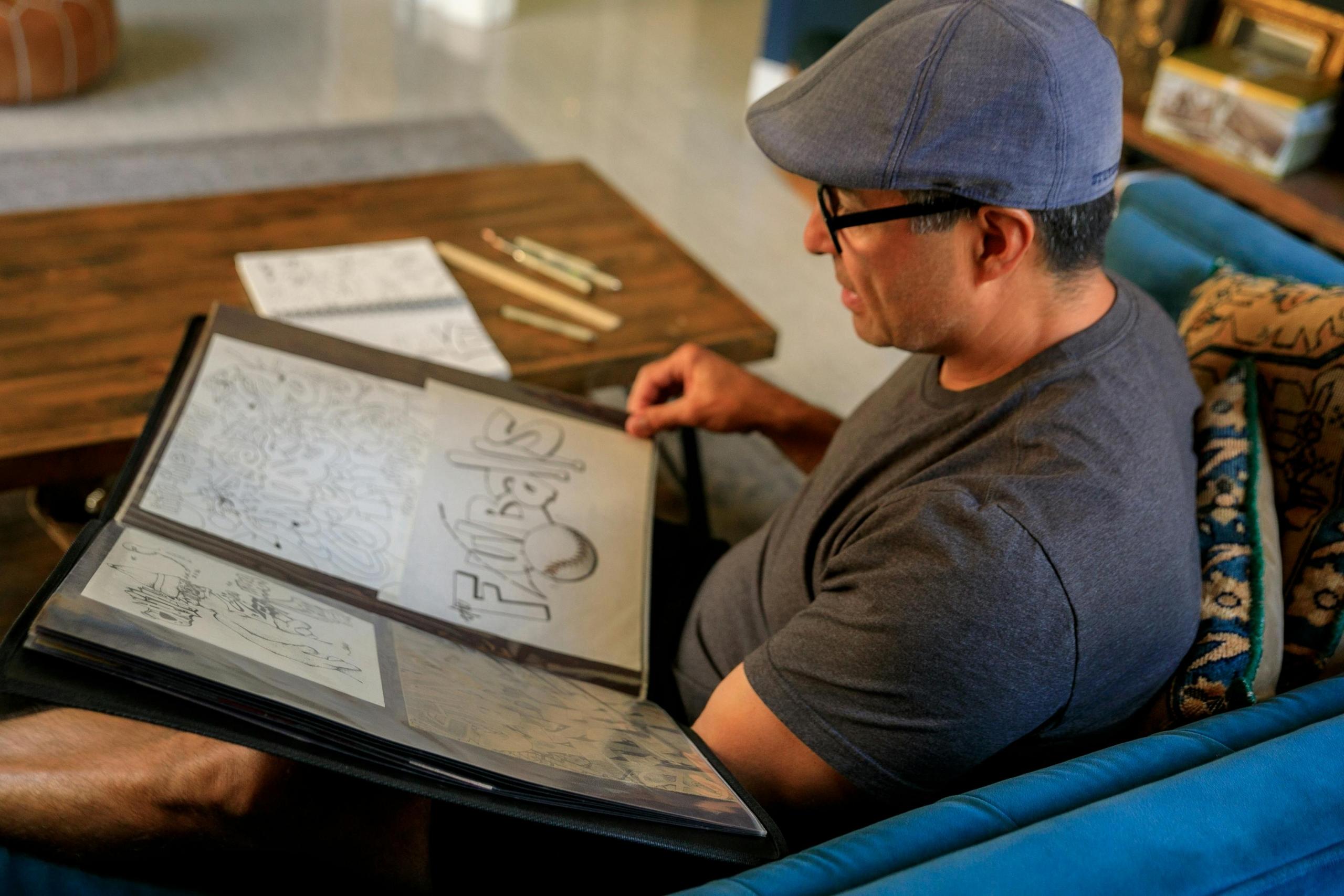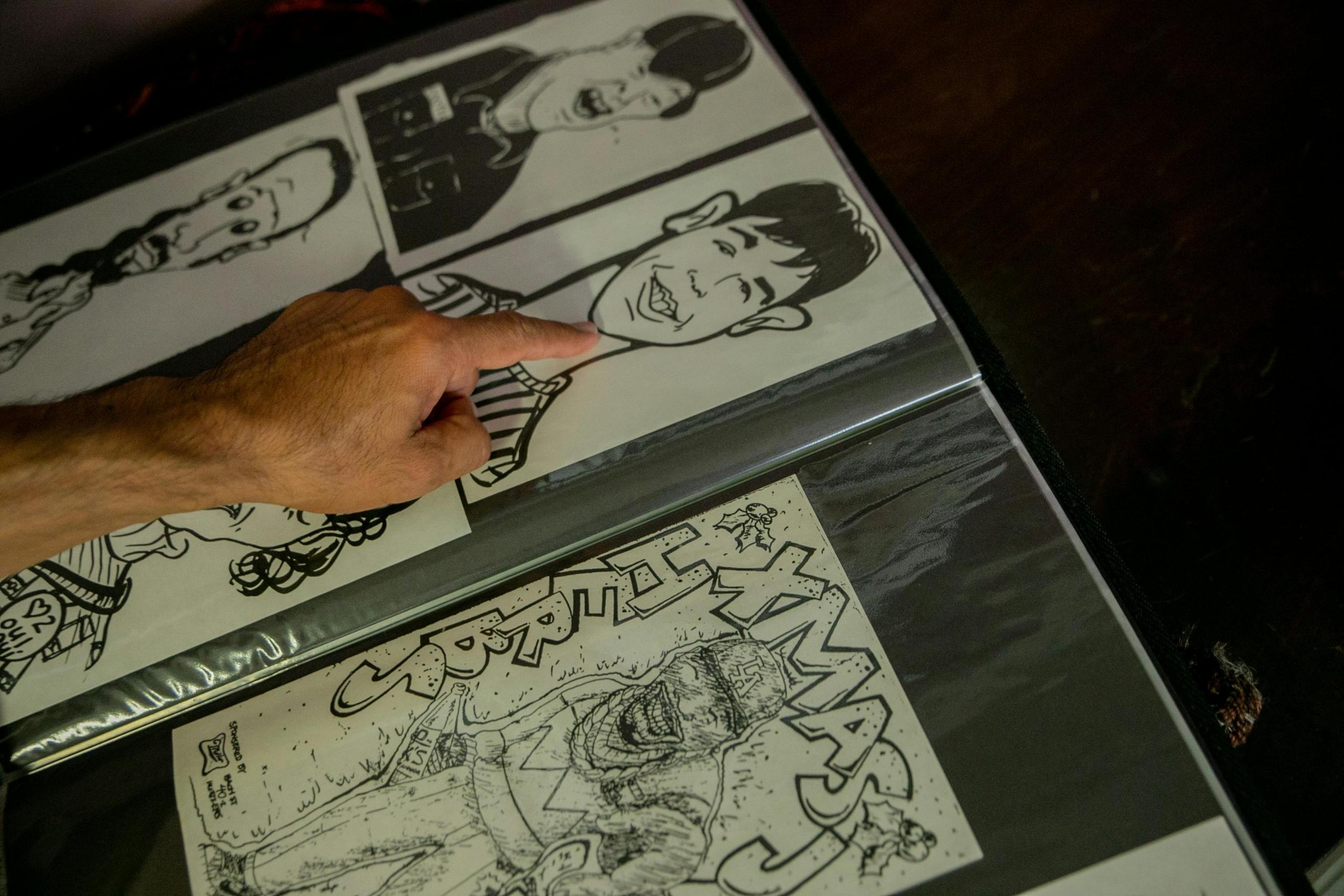As a graphic designer, your portfolio is your most powerful tool for showcasing your skills, creativity, and unique style. It is a visual resume highlighting your best work and demonstrating your ability to solve design problems. A well-crafted portfolio can open doors to different job types, attract potential clients, and set you apart in a competitive industry.

Purpose of a Graphic Design Portfolio
A graphic design portfolio is a curated collection of your best work that showcases your skills, creativity, and what you can do as a Graphic designer. This collection needs to be selected to present the most compelling examples of your design capabilities, demonstrating what you can create and how you think and solve visual problems. Here's why it works:
- Visual Representation of Skills: Shows your design abilities clearly and tangibly.
- Showcases Creativity: Highlights your creative range and versatility across various projects.
- Demonstrates Expertise: Displays your understanding of design principles and problem-solving skills.
- Builds Credibility: Professional presentation and client testimonials enhance your reliability.
- Secures Job Opportunities: Sets you apart in job applications by providing visual proof of your abilities.
- Attracts Clients: Acts as a marketing tool to attract and secure freelance work.
- Demonstrates Value: Shows how your work solves problems and meets objectives, proving your worth.
For students, freelancers, and professionals alike, a portfolio is more than just a compilation of projects; it's a visual narrative of your design development, highlighting your unique style and approach to design challenges.

Types of Portfolios
Physical Portfolios
Physical portfolios are traditional print collections of your work. They are advantageous for face-to-face meetings and interviews where tangible, high-quality prints can make a strong impression. They allow for a tactile experience and can showcase your ability to work with physical media.
Digital Portfolios
Digital portfolios are essential in today's digital age. They can be shared easily through personal websites or design software like Behance and Adobe Portfolio. Digital portfolios allow for interactive elements, such as animations and hover effects, and are accessible to a global audience anytime.
Additionally, website builders such as WordPress, Squarespace, and Wix allow you to easily create custom portfolio sites, providing flexibility and personalization for your online presence.
Key Elements of a Graphic Design Portfolio
Personal Branding
A cohesive personal brand is crucial. This includes your logo, color scheme, and typography. Consistency in these elements helps create a professional image and makes your portfolio memorable.
Portfolio Content
Include a variety of work that demonstrates your range and expertise. This can include:
- Logos
- Branding
- Web design
- Illustration
- Animation
- Print design
- Case Studies
Present projects with context, objectives, process, and results. This helps potential clients or employers understand your approach and problem-solving abilities.
About Me Section
Include a personal introduction, resume, and contact information. This section allows you to share your background, skills, and personality.
Testimonials and References
Adding testimonials from clients or colleagues can build credibility and showcase your professionalism and reliability.
Layout and Structure
A clean, user-friendly layout with a logical structure is essential. It ensures that your work is the focal point and visitors can easily navigate your portfolio. You can ensure easy navigation with clear menus and links. This makes it simple for potential clients or employers to find and view your work.
Maintain a consistent visual style throughout your portfolio. This reflects your attention to detail and helps create a cohesive presentation.
Interactivity
It's a good idea for digital portfolios to include interactive elements like hover effects, animations, and responsive design to enhance user experience and engagement.

Building a Strong Portfolio
When building a strong portfolio, focus on quality over quantity by showcasing your best work rather than including everything. Quality pieces make a stronger impression and highlight your expertise.
Tailor your portfolio to the type of work you want to attract, showcasing projects that align with your desired career path or client base.
You must also keep your portfolio current with recent and relevant projects; regular updates demonstrate growth and keep your portfolio fresh.
Additionally, seek feedback from peers and mentors to improve your portfolio. Constructive criticism can help refine and enhance your presentation, ensuring it is the best it can be. A well-crafted portfolio showcases your skills and helps you establish yourself as a professional graphic designer, demonstrating your ability to meet industry standards and attract clients or employers. Enrolling in a graphic design program or course can be very helpful when developing your skills and portfolio.

15 Examples of Great Graphic Designers' Portfolios
To inspire your graphic design portfolio, here are 15 examples of exceptional graphic designers who showcase diverse aspects of the field:
- Bruce Mau
Known for his innovative approach to design and large-scale environmental graphics, his work spans branding, architecture, and urban planning.
- Marian Bantjes
An artist, designer, and typographer, Bantjes is renowned for her intricate and ornamental work that mixes art and design beautifully.
- Karim Rashid
With a unique style characterized by bright colors and bold forms, Rashid's designs range from product design to branding and interiors.
- David Carson
Famous for his unconventional and experimental typography, Carson revolutionized editorial design, particularly with his work for Ray Gun magazine.
- Paula Scher
A partner at Pentagram, Scher is known for her impactful use of typography and branding projects for major clients like The Public Theater.
- Stefan Sagmeister
Noted for his innovative and often provocative designs, Sagmeister's work spans album covers, typography, and branding.
- Jessica Walsh
Co-founder of the design studio &Walsh, Walsh's work in branding, art direction, and illustration is known for its vibrant and playful style.
- Neville Brody
A leading figure in typography and digital design, Brody's influential work includes The Face and Arena magazine editorial design.
- Paul Rand
Paul Rand was a pioneering American graphic designer known for his iconic corporate logo designs. His work includes logos for major companies such as IBM, ABC, UPS, and NeXT.
- Michael Bierut
A partner at Pentagram, Bierut's diverse portfolio includes corporate identities, environmental graphics, and public installations.
- Chip Kidd
Renowned for his book cover designs, Kidd's work blends visual wit and strong conceptual thinking, making him a standout in publishing design.
- Milton Glaser
Milton Glaser was an influential American graphic designer best known for his iconic "I ♥ NY" logo and the psychedelic Bob Dylan poster. His work spans a variety of mediums, including logos, posters, and magazine designs.
- Massimo Vignelli
Known for his clean, modernist approach, Vignelli's work includes iconic projects like the New York City Subway map and branding for American Airlines.
- April Greiman
A pioneer of digital design, Greiman's work integrates digital technology with traditional graphic design, pushing the boundaries of the medium.
- John Maeda
A designer, technologist, and educator, Maeda's work explores the intersection of design, technology, and business, emphasizing simplicity and clarity.
These designers highlight graphic design's different branches and works, from typography and branding to digital design and environmental graphics. Studying their portfolios can provide valuable insights and inspiration for creating your own standout portfolio as you become a Graphic designer.

Common Mistakes to Avoid
When creating your portfolio, it's important to avoid common mistakes that can detract from its effectiveness.
Overcrowding your portfolio with too many pieces or a cluttered layout can make it difficult for viewers to focus on your best work; a clean, focused portfolio is more impactful.
Ensure all included work is high quality, as mixing strong and weak pieces can dilute the overall impression.
Lastly, don't neglect mobile users; ensure your portfolio is mobile-friendly, as many people will view your work on their mobile devices. A well-organized, high-quality, and easily navigable portfolio will create a stronger and more professional impression.
Conclusion
Creating an outstanding graphic design portfolio is essential for showcasing your skills and attracting opportunities. Following the tips and strategies outlined in this guide, you can develop a portfolio reflecting your unique style and abilities.
Remember to keep your portfolio updated, seek feedback, and promote it effectively. If you need additional help, consider exploring private tutoring options with Superprof to boost your success in graphic design.
With dedication and creativity, you can build a portfolio that sets you apart in the competitive graphic design industry.















